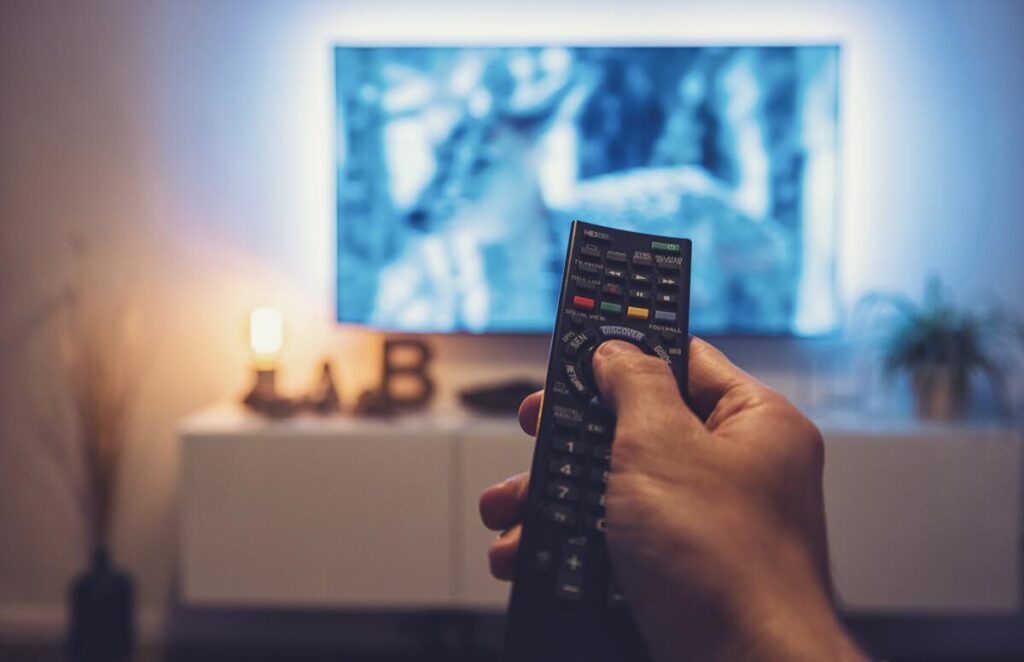Do OLED TVs Get Hot? (Explained)
Disclosure: Tech Parasol is supported by its readers. When you purchase through links on our site, we may earn an affiliate commission. Thank you.
Most electrical equipment gets hot with use and OLED TVs are no different. But how hot should they get and how do they compare to LED TVs?
Well that’s what you’re about to find out.
Let’s get to it.
Here’s what you need to know about OLED TVs and how hot they can get
OLED TVs can get hot depending on a number of factors. For example, large OLEDs consume more power than smaller OLEDs and 8K TVs consume more power than 4K TVs. HDR content also makes the screen brighter and consumes more power. More power consumed means more heat is produced.

Should OLED TVs be hot to touch?
Most OLED TVs should not get so that you can’t touch them.
After doing some research, I found out that Rtings.com reported that some of the 8K TVs that they tested at their max consumption power became too hot to touch. However, it is not clear what type of TVs these were.
I also did some research on Reddit.com. One user in particular in the OLED subreddit asked this exact question and most replied to say that their OLEDs don’t give out much heat.
The original question poser stated that they only noticed that their OLED TV gets hot when children’s TV shows were playing.
This makes sense because many children’s TV shows have vivid, bright colors which makes the screen get brighter.
So, in order to increase the brightness of the screen, the amount of current that flows through the OLEDs needs to increase. This in turn produces more heat.
What temperature should an OLED TV be?
According to LG, the manufacturer of all OLED panels, the operating temperature should be between 0°C and 40°C (32°F to 104°F).
Can OLED TVs catch fire if they get too hot?
The chance of an OLED TV getting so hot that it reaches ignition temperature is extremely thin.
This ignition temperature of course depends on the material that is getting most of the heat.
Given that a good portion of a TV these days is made of plastic, you’ll probably witness it melting before it has a chance to catch fire.
Of course there is always a chance that a faulty component inside the TV can short-circuit which can cause it to catch fire.
But if there is a known fault with the TV that causes it to catch fire then the product will be recalled immediately.
Other than that, there are some external factors that can cause a TV to catch fire. These include:
- Power surges caused by thunderstorms.
- Overloading electrical outlets by connecting too many appliances and extension cords to a single connector.
- Short circuiting of the house wiring.
- Damaged wiring insulation can cause a short-circuit, leading to arcing or a fire.
- Heat sources near the TV can cause the TV to overheat, which then leads to short-circuits which can cause a fire.
Is it okay to put an OLED TV in a hot room?
You should avoid placing any TV, whether that be an OLED or an LED TV in a hot room, especially if it gets hot.
Instead, you should place the TV in a room with good ventilation to prevent it from overheating.
What causes OLED TVs to produce more heat?
A number of factors can cause an OLED TV (or any TV) to produce more heat. Here they are:
Display brightness.
Brighter screens require more power and therefore produce more heat.
Display resolution
Higher resolution displays produce more heat because there are more pixels. For example, 8K TVs require more power than 4K TVs because there are four times as many pixels.
Content
Bright scenes which produce vivid colors, require the OLEDs in the display to get brighter. HDR content often boosts the TV’s brightness settings to the max, which again will cause the TV to produce more heat.
Physical size
The physical size of an OLED TV can determine how much heat is produced. Larger TVs require more power than smaller TVs even with the same technology inside them.
Plastic films
Sometimes a plastic film is applied to the front and back of a TV for use during shipping.
Some users in the AVS Forum stated that they had forgotten to remove this plastic film, which caused the TV to get hot.
Removing it prevented the TV from radiating heat even after long hours of usage.
Do OLED TVs get hotter than LED TVs?
According to research by Rtings.com, OLED TVs can get hotter than LED TVs because they have a higher energy and power consumption.
However this can be caveated by the fact that bright LED TVs can consume just as much energy as an OLED when watching HDR content.
Do OLED TVs have cooling fans inside?
OLED TVs don’t have cooling fans but some manufacturers are beginning to use heat dissipation plates to help keep OLED TVs cool.
The idea of using a heat dissipation plate (basically a heat sink) in OLED TVs was introduced by Panasonic a couple of years ago (according to YouTube channel Stop The FOMO).
But perhaps the biggest benefit of the heat sink is that it allows the OLED panel to realize more of its potential.
The more current that flows through an OLED, the hotter it gets and therefore the shorter its lifespan will be.
The heatsink removes some of the heat which enables the panel to be turned up brighter.
At the same time the likelihood of burn-in and the shortening of the lifespan of the OLEDs is reduced.
How to stop an OLED TV from overheating
Here a some tips to help keep your OLED TV cool:
- Avoid placing the TV in a hot room.
- Avoid placing the TV near hot objects such as a fireplace, radiator, fan heater or any source of heat that you may have.
- Always ensure adequate ventilation and air-flow around the TV.
- Dust down the TV, particularly around vents where dust can gather and prevent air from cooling down the insides of the TV.
- Check for product recalls. It’s possible that there may be a known overheating issue with particular TV models.
Sources
OLED and LED TV Power Consumption and Electricity Cost – RTINGS.com
Heat-Sink for LG OLED TV: The “PLATE” Is Coming!

Robert Anderson
Robert Anderson, the founder of Tech Parasol, had a keen interest in tech from a very young age. He studied Electronic Engineering at University and then went on to become a Software Developer. He launched Tech Parasol in 2021 to share his knowledge with the aim of making tech easier to understand for everyone.
